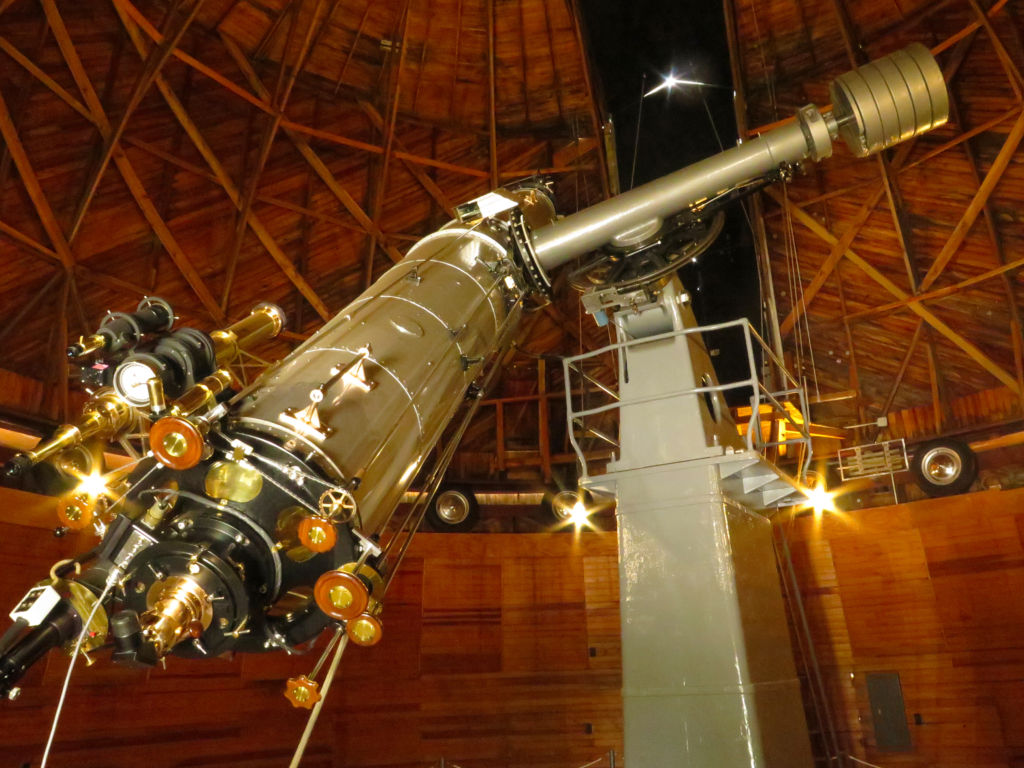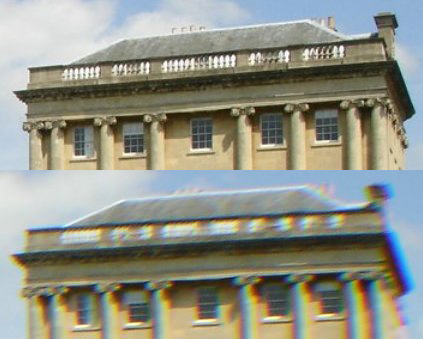The nightly sky has fascinated early humans and modern research scientists alike. Many wonder what is out there and look to the sky for answers to questions like: are we alone? Due to the vast scale of the universe, it is not possible for us to participate in interstellar travel to seek those answers. Instead, we use powerful optics to observe and study celestial objects. One such device that has been used since early 1600s for observational purposes is called a Telescope. In the early 17th century, Galileo Galilei, an Italian Polymath, invented a telescope to study various celestial objects.
During Galiliei’s time, many astronomers and religious leaders believed that the universe was Geocentric (belief that Earth was at the center of the universe and every celestial object revolved around it). In order to refute this claim and prove that we live in a Heliocentric universe, Galileo invented a telescope to record and study the positions of the planets (and their moons) and the sun relative to Earth. Due to Galileo’s contribution to observational astronomy, today, he is referred to as “The father of observational astronomy”.

An artist’s depiction of Galileo Galilei cataloging celestial objects by using his refractive telescope.
Refracting Telescopes
One of the two types of telescopes is called a refracting telescopes. Just like the name suggests, this telescope is made entirely of refractor lenses. In fact, this telescope was the one that Galileo Galilei used. In contrast to Reflector telescopes, refractors use lenses on the tip and the end, making them much larger. Without diving too deep into optics, the telescope focuses the light by using a combination of concave lenses to produce a sharper and brighter image. One can use the Lens Maker’s equation to mathematically represent the dynamics of a refractor telescope. In regards to the cost, refracting telescopes are one of the most affordable ones. In addition, some of the ground based observatories, such as Lowell Observatory, Lick Observatory, Paris Observatory, and Yerkes Observatory, use refractor telescopes to perform academic research.

Clark Telescope located at Lowell Observatory in Arizona. This telescope is a refractor because it uses lens instead of mirrors to focus and magnify images.
Reflecting Telescopes
The type of telescope that is most widely used in Astronomy research is the Reflector Telescope. These telescopes consist of big mirrors that make them appear bulkier. In contrast to refractors, reflectors do not use lens to magnify the image. Instead, they use large mirrors to gather photons and then focus the light to magnify the image. In the late 17th century, Isaac Newton invented reflectors as an alternative to the refractors. This was done because the design of refractors made them severely suffer from chromatic aberration.
Formally speaking, chromatic aberration is an optical disturbance resulting from dispersion; a failure in lens’ ability to focus all colors to the same convergence point. In a refractor telescope, chromatic aberration takes place because of the difference in the index of refraction for different wavelengths of light. Therefore, chromatic aberration causes the image to appear blurry. Reflectors also suffer with other types of chromatic aberration, however, its broad design minimizes the impacts of it.

An example that shows the effects of chromatic aberration. As evident by this image, chromatic aberration causes the house to appear out of focus. Similarly, such phenomenon causes scientists to obtain irregular data from observing celestial objects.
Radio Telescope
Radio Astronomy is a one of the most important disciplines in astronomy. Today we know more about the physics of black holes, active galactic nuclei, neutron stars, and other high energy cosmic objects all because of radio astronomy. Just like the optical telescopes study the optical spectrum of the radiation coming from celestial objects, radio telescopes register the radio frequencies that come to us from these remote corners of the universe. As it turns out there is an abundance of information ciphered into these waves that tell us a lot about the cosmos. A radio telescope consists of an antenna and a radio receiver and looks very much like the modern satellite dish.
One of the key applications of using this telescope is retrieving the rotation curve of our galaxy. The curve basically shows the angular velocity of celestial objects and helps scientists predict how the velocity changes as a function of radial distance from the galactic center. In particular, the telescope is used to measure the 21 cm line of neutral Hydrogen across the galactic plane. This measurement helps researchers estimate the angular velocity of celestial objects and retrieve the galactic rotation curve. More interestingly, this measurement is one of the key evidence that supports the existence of dark matter. One of the most prominent radio observatory that is conducting similar type of research is called the Haystack Observatory at MIT.
Space-based Telescopes
Of all the telescopes discussed in this article, the most exclusive and expensive telescopes are space-based telescopes. Even though scientists have built many powerful ground-based telescopes, the atmosphere and light pollution causes their images to appear rather blurry. Hence, a less powerful space-based telescope produces a much sharper image relative to a powerful ground-based telescope.
Two of the most renowned space-based telescopes are Spitzer and Kepler Space Telescope. Spitzer uses the infrared portion of the electromagnetic spectrum to observe celestial objects like nebulas, planets, and stars. Kepler, on the other hand, observes the flux of stars and try to detect deviation in it. The deviation is caused when a planet passes by the star. Therefore, the main goal of Kepler is to observe exoplanets (mostly earth-like planets in other solar systems.). Currently, space-based telescopes provide the best data in astronomy research, however, adaptive optics technology is making ground-based telescopes a good alternative.
Further Reading
- Reflecting Telescopes – Wikipedia, https://en.wikipedia.org/wiki/Reflecting_telescope
- Refracting Telescopes – Wikipedia, https://en.wikipedia.org/wiki/Refracting_telescope
- Galileo Galilei – Britannica, https://www.britannica.com/biography/Galileo-Galilei
- Radio Telescopes – Wikipedia, https://en.wikipedia.org/wiki/Radio_telescope
- Space Telescope – Wikipedia, https://en.wikipedia.org/wiki/Space_telescope
